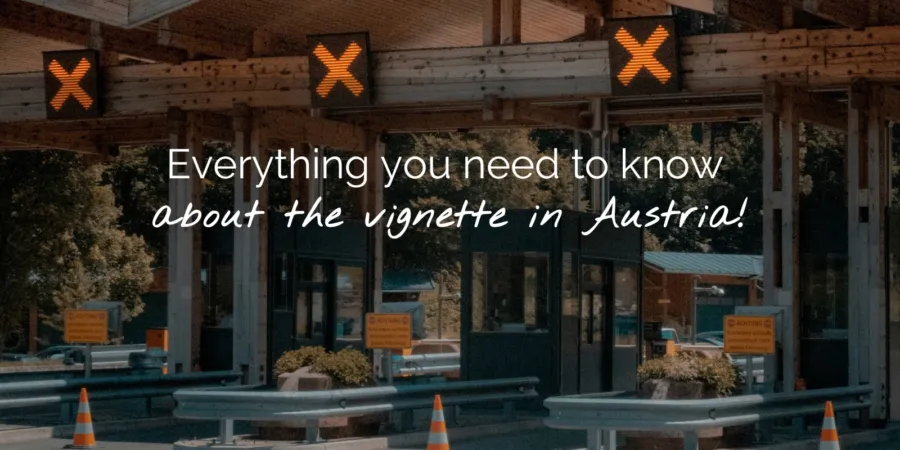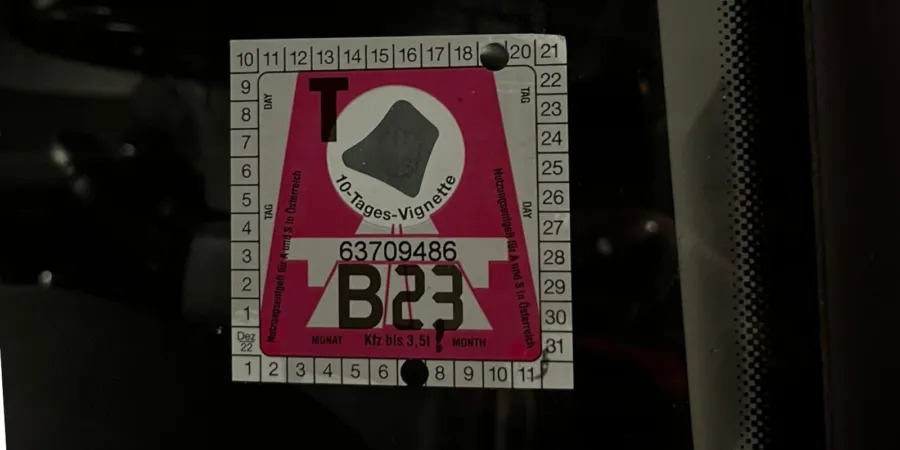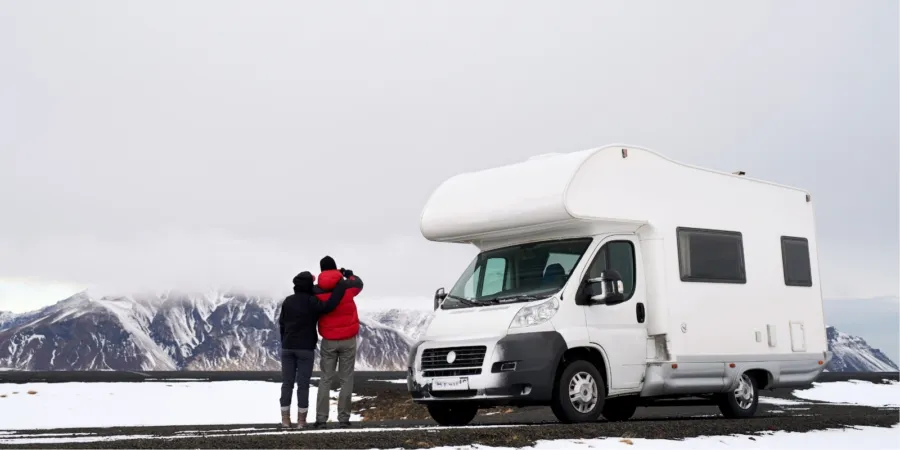Everything you need to know about the vignette in Austria!

If you're planning to drive to Austria this winter, good preparation is essential. Did you know that you'll need a vignette to use Austria's motorways and expressways? In this blog, we'll tell you everything you need to know about the vignette: what it is, how to get it, and how to avoid getting a fine. Keep reading to find out how you can drive through the beautiful Alpine landscape without a worry.
What is a vignette?
A vignette is proof that you've paid the road tax or toll for using the infrastructure in Austria. It's usually a sticker that you place on the inside of your car’s windscreen. For motorcycles, the sticker is placed in a clearly visible position. However, nowadays there are also digital vignettes, which you don’t need to stick on, as they are linked to your vehicle's registration number.
How much does a vignette cost?
The cost of a vignette in Austria depends on the duration of validity and the type of vehicle. For a short trip of up to one day, you’ll pay €9.30 for a car and €3.70 for a motorcycle. A ten-day vignette costs €12.40 for a car and €4.90 for a motorcycle. If you plan to stay longer in Austria, a two-month vignette might be a better option; this costs €31.10 for cars and €12.40 for motorcycles. For frequent visitors or those staying longer, the annual vignette is the most economical choice: €103.80 for cars and €41.50 for motorcycles.

Where can you buy a vignette?
You can buy the vignette on the website of the Austrian road operator, ASFiNAG. If you purchase a digital one-day vignette or a ten-day vignette, it’s valid immediately. However, do bear in mind: if you purchase a digital vignette for two months or a year, it won’t be valid until eighteen days after purchase! This is due to the statutory cooling-off period of fourteen days (consumer rights), plus an additional three days for postage.
Heavy Vehicle
The Go-Box in Austria is a device used by vehicles over 3,500 kg, such as lorries and buses, to pay tolls on motorways and expressways. It works by registering the number of kilometres driven, and the toll is automatically deducted via toll booths along the road. You can purchase the Go-Box at more than 175 locations in Austria and other countries, and it can be loaded with up to €500. Payment can also be made with a credit card or fuel card. Since 2024, vehicles must provide their CO₂ emission class, and higher rates apply for some tunnels. ASFiNAG is responsible for the system’s control; further information can be found on their website.

Where to place the vignette?
If you’re using a sticker vignette, it must be affixed in the correct location: on the inside of your windscreen, in the top left or behind the rearview mirror. Ensure that it is clearly visible. Always keep the purchase receipt and the back of the sticker.
You cannot, of course, place a digital vignette on your windscreen. Once your registration number is registered, you're free to hit the road without needing to do anything further. However, remember that if you’ve purchased a vignette for two months or a year, it won’t be valid until the specified waiting period has passed.
Avoid a fine!
Controls in Austria are strict. Cameras and mobile teams frequently check whether vehicles have a valid vignette. If you don’t have a vignette or use an invalid sticker, you could face a fine of up to €300. This is a good reason to buy a vignette in advance. It's a small investment that can save you a lot of stress and extra costs.
Additional tolls
There are six roads where you must pay an additional toll. These include the A13 Brenner Autobahn (Brenner Pass), A9 Pyhrn Autobahn (at the Gleinalm and/or Bosruck tunnel), S16 Arlberg Schnellstraße (Arlberg tunnel), A11 Karawanken Autobahn (Karawanken tunnel), and the A10 Tauern Autobahn (at the Tauern and Katschberg tunnels). These costs are separate, so make sure to factor them into your travel budget.
No toll
There are also roads where you do not have to pay tolls. The motorways Westautobahn A1, Linzer Autobahn A26, Rheintal/Walgau-Autobahn A14 (Hörbrans – Hohenems) and Inntalautobahn A12 (Kufstein border – Kufstein Süd) are exempt from the toll requirement. Therefore, you do not need a vignette. This makes it possible for you to drive to the ski resorts Ski Circus Saalbach-Hinterglemm, Wildkogel Arena, and KitzSki, as well as to the villages of Neukirchen am Großvenediger, Bramberg am Wildkogel, Wald im Pinzgau, Mittersill, Viehhofen, Saalbach-Hinterglemm, Dienten am Hochkönig, Maria Alm, and Hinterthal, without having to pay tolls!
PLEASE NOTE: Set your navigation system to avoid toll roads!
No rights can be derived from the above blog. Please check carefully yourself which vignette you need to avoid fines.


